By Timothy B. Wheeler
Bay Journal
Bulldozers, excavators and construction workers are bulling their way into Patapsco Valley State Park near Baltimore this fall.
They’re the advance guard for a task force charged with removing a dormant hydroelectric dam on the Patapsco River and reopening a big stretch of the river to spawning runs of migratory fish.
If the project stays on schedule, Bloede Dam should be gone by the spring of 2019. And, biologists shouldn’t have long to wait to see some action. Sampling surveys conducted in the Patapsco River below the dam have collected hundreds of alewife and blueback herring returning each spring as well as a similar number of juveniles later in the year — an indication of successful spawning.
It’s a remarkable find, given the river’s poor condition and the generally depleted state of river herring throughout the Chesapeake Bay and the entire East Coast.
“We were really surprised that in this urban watershed, herring have been able to hang on,” said Steve Minkkinen, project leader for the U.S. Fish and Wildlife Service, as he and three crew members took a break in September from a fish sampling cruise on the river.
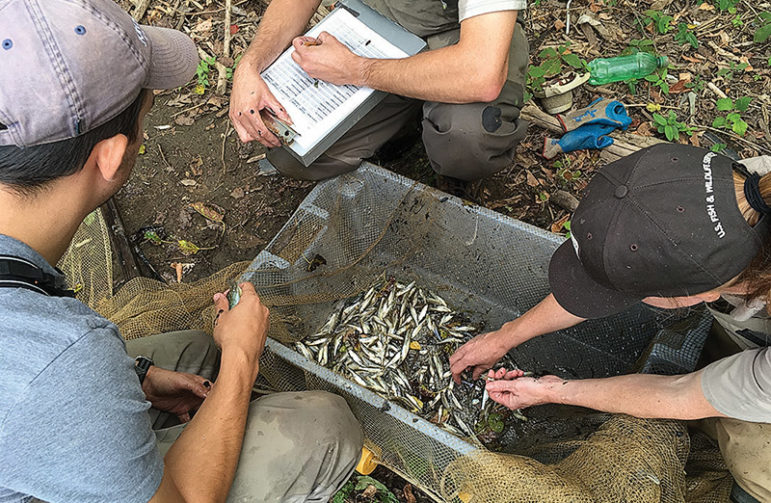
Forage and juvenile fish netted in Baltimore’s Patapsco River are tallied, part of regular sampling done through the summer. (Timothy B. Wheeler photo)
Surprised
Over the course of the summer, Minkkinen’s crew worked the nine-mile stretch of river below the dam and caught a total of 330 juvenile blueback herring and two young alewife in the 100-foot seine net they deploy at about a dozen sites along the riverbanks. They also caught 67 juvenile American shad and 3 young hickory shad, two larger species of the herring family.
In the spring, biologists using electrofishing gear counted 91 adult alewife and 216 blueback herring, many of them just below the dam.
River herring are anadromous, meaning they spend much of their lives at sea, but return to freshwater in spring to spawn. These small, silver-sided fish are prey for larger fish, such as striped bass, and once supported one of the largest commercial fisheries in the Bay.
But with dams removing access to spawning grounds and intense fishing pressure, their numbers declined drastically. By 2012, Maryland, Virginia and the Potomac River Fisheries Commission had imposed harvest moratoriums for river herring, along with many other states along the East Coast.
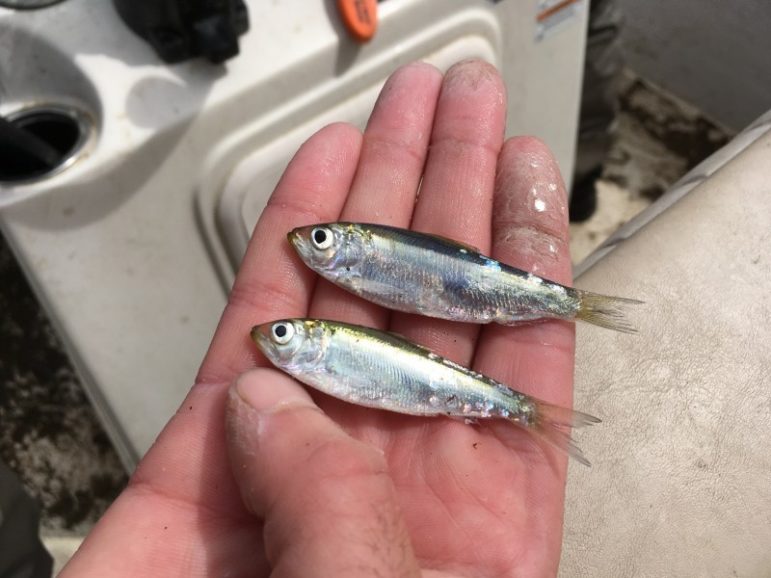
Juvenile blueback herring (top) and American shad collected in early September sampling run. (Timothy B. Wheeler)
May be endangered
Despite some bright spots — a recent study estimated more than 1 million river herring spawning in the Choptank River — their numbers are still low enough that they’re being considered for protection under the federal Endangered Species Act.
Shad are in much of the same fix, though they have been protected by commercial harvest moratoriums far longer — since 1980 in Maryland and 1994 in Virginia.
Until recently, no one expected to find herring or shad in the Patapsco. The heavily urbanized waterway on Baltimore’s west side has been blocked to spawning fish like herring for more than a century, dammed in several places to power flour mills and factories as well as generate electricity. The 39-mile river has also been fouled by repeated sewage spills, industrial discharges, stormwater runoff and rampant littering.
But things have been looking up lately for the Patapsco. Once-abysmal water quality is now poor to middling, and two of its dams have already been removed.
With that in mind, biologists looking to restore spawning runs to the Patapsco thought they’d need to use fish reared in a hatchery.
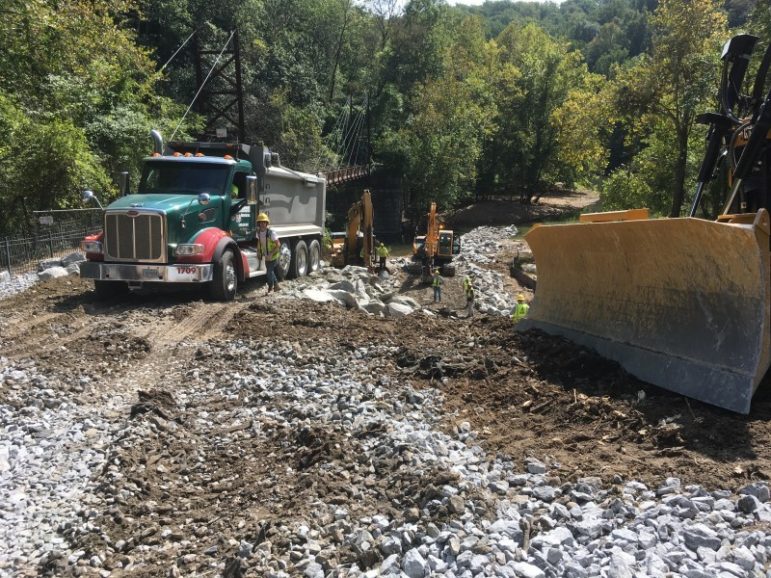
Dam removal project began with construction of an access road into Patapsco Valley State Park. Timothy B. Wheeler photo
Stocking hatchery fish
The Maryland Department of Natural Resources began stocking the river in 2013, releasing nearly 1 million herring larvae and juvenile fish that year from the state’s hatchery. The stocking continued for two more years. But by then, Minkkinen’s crew had seen enough wild herring in the river, before any of the hatchery-reared fish could return to spawn, to conclude the population didn’t need help from the hatchery. So, the stocking of herring has been halted.
The state has continued stocking the Patapsco with American and hickory shad, which didn’t turn up as often in the early sampling surveys. And, using electrofishing gear this spring, state and federal biologists counted 116 hickory shad and 22 American shad in the lower river, along with even more river herring.
Minkkinen said those results offered the first indication that the shad stocking might be working, since until this year biologists had never caught more than one adult shad in the river. While the jump in numbers appears to have been triggered by the stocking program, laboratory analysis is needed to determine whether the recent catch originated from the hatchery.
River stills needs improvement
The river still needs much improvement, both for fish populations and water quality. At the Southwest Area Park in Halethorpe, where Minkkinen and his crew embark on sampling cruises, a portable toilet normally stationed at the boat ramp was floating in the water in September. Bottles, cans, plastic bags, a soccer ball and even a few syringes cluttered the shoreline.
“We found a body out here a couple years ago,” Minkkinen recalled.
Farther downriver, as the biologists deployed their seine net, train cars and traffic rumbled across nearby bridges. They corralled plenty of tiny forage fish — mostly pollution-tolerant Atlantic silversides and striped killifish, but also an occasional juvenile striped bass and a couple of blue crabs.
The morning’s work yielded only two blueback herring and one American shad juvenile. Minkinnen said that, as temperatures cooled in early September, the young fish probably began migrating down the Bay toward the Atlantic. They’ll roam the coast for the next three to five years before returning to spawn.
When they do, they may be able to swim much farther upriver. Bloede Dam, reputed to be the first submerged hydroelectric power plant ever built, has limited spawning fish to the lower nine miles of the river since it began operating in 1907. A fish ladder installed in the 1990s proved ineffective at getting fish over the 26.5-foot high concrete barrier, so authorities concluded that the only way to restore migratory fish was to give them free run of the river.
(Officials also had another compelling motive for removing the dam – it’s become what lawyers call an “attractive nuisance,” an irresistible draw for park visitors who are oblivious to the hazards of the structure or the powerful currents it channels. Six drownings have been recorded there in the past 12 years, according to the Maryland Natural Resources Police.)
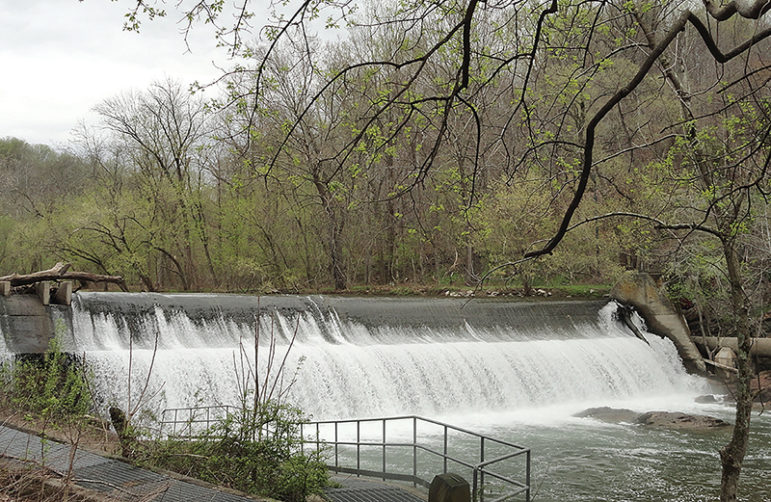
Preliminary work has begun to take down Bloede Dam, which has blocked most of the Patapsco River from spawning fish since it was completed in 1907. (Maryland Department of Natural Resources)
Costs $15M to $17 million
Before Bloede can be removed, a pair of sewer lines needs to be relocated, including a huge, 42-inch main that runs right along the riverbank and through the dam itself. Demolition of the dam should begin next year and be finished by spring 2019. The entire project is expected to cost $15 million to $17 million, shared by federal and state governments.
Bloede’s removal should open another 18 miles of long-lost spawning grounds to herring, shad and other fish. Whether they’ll take advantage of it remains to be seen.
“You’ll have a lot more juvenile habitat, suddenly,” Minkkinen said. “You’d expect to see…an increase in population. Certainly, that’s the hope.”
It’s unclear, though, whether anyone will be keeping tabs to see if the hatchery stocking and dam removal have paid off. The annual fish sampling has been underwritten by the Maryland Port Administration, which provided about $100,000 annually as mitigation for harbor dredging. That commitment expires this year.
twheeler@bayjournal.com
Bay Journal is published by Bay Journal Media, a 501(c)(3) nonprofit, to inform the public about issues that affect the Chesapeake Bay. A print edition is published monthly and is distributed free of charge. News, features and commentary are available free online at bayjournal.com. MarylandReporter.com is partnering with the Bay Journal by publishing one of its articles every Friday.

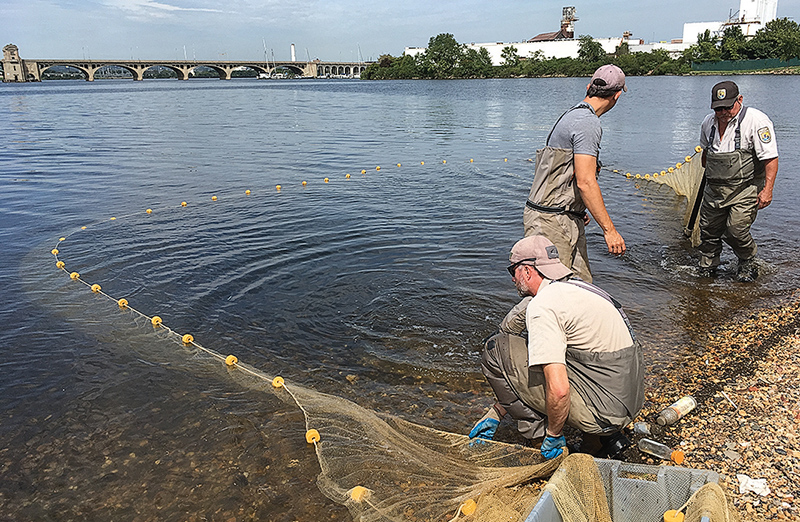

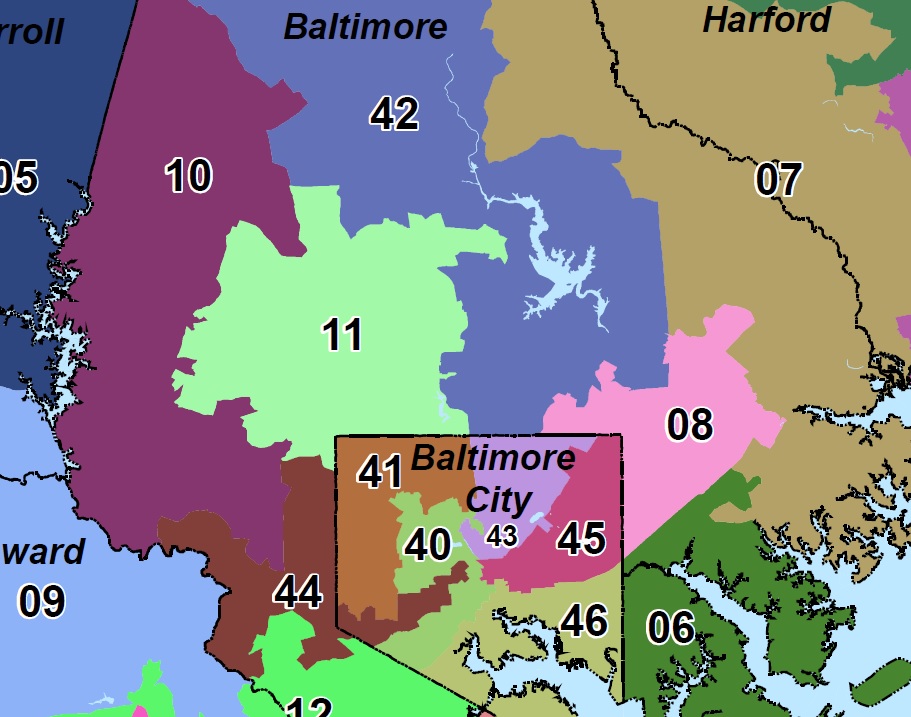

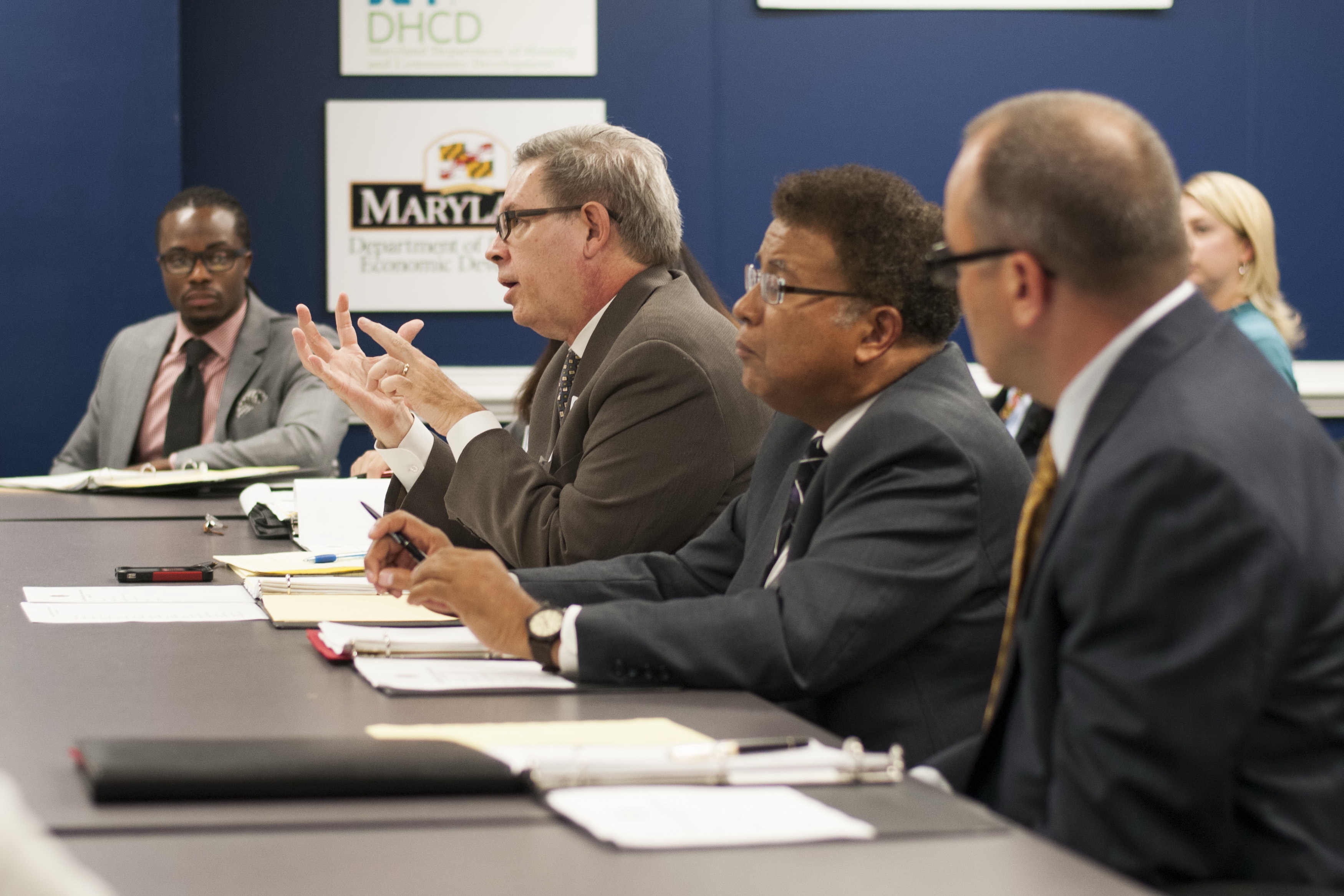

Recent Comments